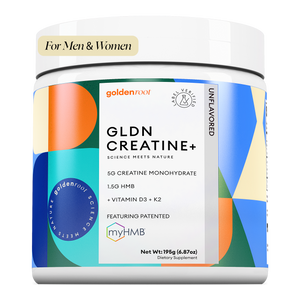The “best” creatine can help you build muscle more efficiently and speed up recovery. With so many options on the market, knowing what to look for ensures your supplement matches your training goals.
Understanding Different Creatine Forms
Here is a breakdown of the various types of creatine:
1. Creatine Monohydrate
Often referred to as the benchmark for creatine supplementation & creatine monohydrate is the most widely studied and widely used form. It’s effective, affordable, and ideal for beginners and seasoned lifters alike.
2. Micronized Creatine
Micronized creatine is simply creatine monohydrate that’s been processed into smaller particles. This allows for quicker mixing, improved absorption, and potentially fewer digestive issues for sensitive users.
3. Creatine HCL
Creatine hydrochloride is known for better solubility and may be gentler on the stomach. Some users prefer it due to reduced bloating or water retention, although scientific comparisons to monohydrate remain limited.
##creatine-calc
4. Buffered & Ethyl Ester Forms
Forms like buffered creatine and creatine ethyl ester claim enhanced uptake and absorption. However, evidence is mixed, and they tend to be more expensive without consistently better results.
Key Quality Indicators to Look For
The must-have quality checks before you buy Creatine and add it to your daily routine:
Third-Party Testing & Certifications
Choose creatine products certified by respected third-party organizations like NSF Certified for Sport or Informed-Choice. These help guarantee the formula is clean from banned substances and contaminants.
Read more: is creatine safe while breastfeeding
Ingredient Purity
Look for 99.9% pure creatine. Steer clear of unnecessary fillers or added sugars, artificial colors, or unlisted ingredients.
Transparent Labeling
Reliable brands clearly list dosing instructions and ingredient amounts. Avoid products with proprietary blends that obscure how much creatine you're actually getting.
Dosing Strategies & Serving Sizes
Loading Phase vs. Maintenance
A loading phase involves taking 20 grams daily (split into 4 doses) for 5-7 days, you’d then shift to a regular dose of 3-5 grams daily. This saturates muscles more quickly but isn’t required for results.
Single Daily Dose
If you prefer simplicity, skip the loading phase and stick to 3-5 grams per day. It may take a few weeks to see results, but muscle creatine stores will still increase.
Timing Tips
Creatine works best when taken consistently. For optimal uptake, take it post-workout with a carbohydrate or protein source to enhance absorption.
Read more: How to Measure 5g of Creatine: Teaspoons, Tablespoons, and Simple Methods That Work!
Flavor, Mixability & Delivery Formats
Unflavored Powder
This option is versatile and can be easily added to shakes, smoothies, or just plain water. It contains no additives, making it ideal for purists.
Flavored Blends
Flavored creatine adds convenience, but check labels for added sugars or artificial ingredients. These may improve taste but could compromise purity.
Capsules & Tablets
Capsules are great for portability and ease of use. However, always check the serving size.
Price vs. Value: (A Smart Purchase)
Cost per Serving
Always calculate the cost based on pure creatine content. Some products may appear cheaper upfront but offer fewer effective servings.
Bulk Discounts & Subscription Options
Buying in bulk or via subscription services can save money over time, especially if you supplement daily.
Brand Reputation & Customer Reviews
Reputable brands often have transparent manufacturing practices, clean labels, and strong customer feedback. Always research before purchasing.
Avoiding Common Pitfalls
Cheap Blends with Fillers
Avoid products with unnecessary additives like maltodextrin or magnesium stearate, which can dilute the effectiveness of the creatine.
Read more: Creatine for Muscle Preservation: How It Helps Maintain Lean Muscle Mass
Overpriced “Proprietary Blends”
Watch out for marketing buzzwords that hide dosages under proprietary terms. These blends often under-dose creatine while driving up the price.
Stimulant-Creatine Combos
Some products mix creatine with caffeine or other stimulants. While they may boost performance short term, they can cause jitters or digestive discomfort.
Note: Information provided in this guide is for educational purposes only and is not intended as medical advice. Always consult with your physician before starting any new supplement.
References & Sources



